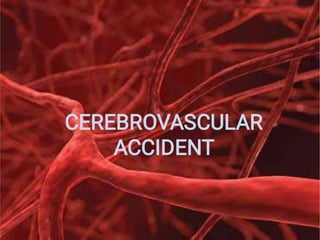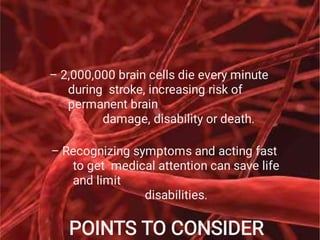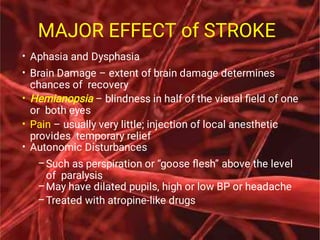Cerebrovascular accident, also known as stroke, occurs when blood supply to the brain is interrupted, usually by a clot or burst blood vessel. There are two main types - ischemic (85% of cases), caused by a clot blocking a vessel, and hemorrhagic, caused by a ruptured vessel. Risk factors include age over 55, diabetes, family history, high blood pressure, heart disease, smoking, obesity, and excessive alcohol. Symptoms vary depending on the affected brain area but may include weakness, numbness, vision issues, speech problems, and loss of coordination. Diagnosis involves physical exam, CT scan or MRI. Treatment focuses on restoring blood flow and preventing further complications through medication, rehabilitation




























